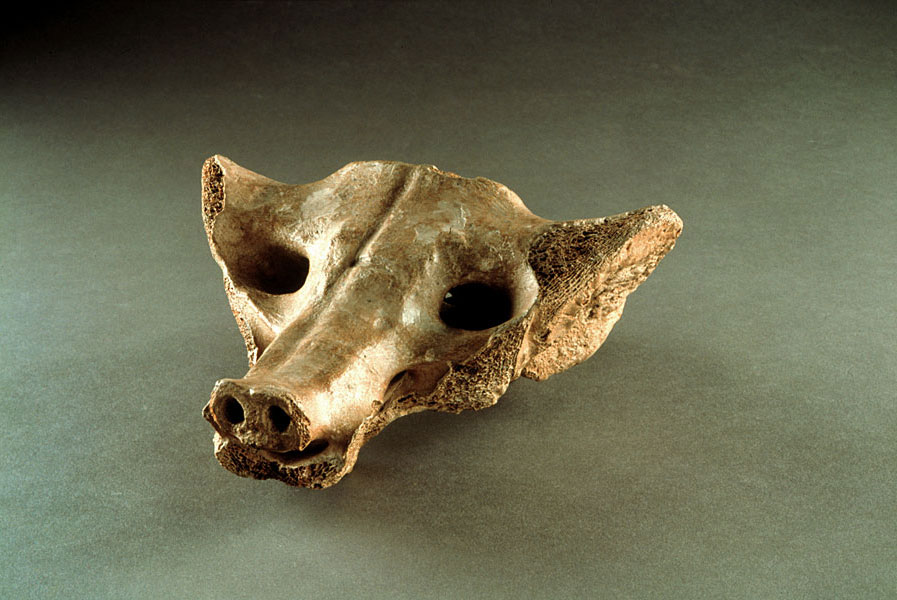
- Camelid sacrum in shape of canine
- 14,000-7,000 BCE
- Bone
- Tequixquiac, central Mexico
Camelid Sacrum
- head of a canine
- made out of a bone
- from an alpaca-like species
- integrated bone shape into work
- or selected bone for the canine
- no information on why it was produced
Theories
- sacrum is supporting bone and very durable
- sacrum is close to reproductive parts
- thought to be involved in reproduction by many cultures
- assumed to channel the seminal fluid
- known as “resurrection bone”
- the part that does not decompose when a person dies
- the bone from which a new human grows
- contained a spirit of a hunted animal
- Mesoamerican ethnographic studies
- very important sacred bone
- natural shape of canine
- circular spaces were carved to be noses
- required sharp instrument
- resembles a sacrum
